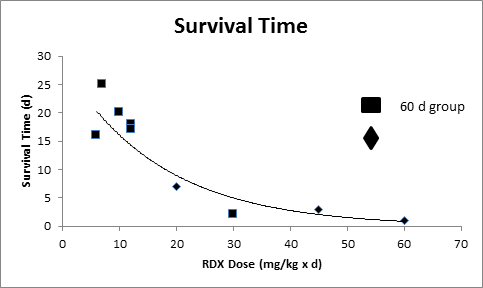Habitat & Geography
General Information:
The Western Fence Lizard is a widespread organism that inhabits many different types of habitats (Hollingsworth and Hammerson, 2007). According to research gathered from the ICUN Red List of Endangered Species, the Western Fence Lizard has a population range spanning the western United States into northern parts of Mexico. The species occurs in parts of Washington, Oregon, Idaho, Utah, California, Arizona, North West Mexico and nearly all of Nevada. In these regions, the organism lives in diverse elevations as well, as they can reside anywhere from sea level to 11,000 feet above sea level. According to the same source, the lizard lives in very diverse ecological habitats such as; grassland, woodland, coniferous forests, rocky canyons and slopes. In addition, according to the Idaho Museum of National History, the Western Fence Lizard tends to live in elevated habitats such as mountains, but prefers to stay near the ground in these habitats; however they have been seen climbing up into larger trees or bushes on occasion (Diller and Johnson, 1982). The Western Fence Lizard attempts to avoid harsh conditions such as low elevation deserts and moist forested areas, however the organism can be found on the outskirts of both types of habitats. Since the Western Fence Lizard resides in such diverse ecological and geographic regions, it is difficult to say exactly what types of other animals are also present in the environment, nevertheless according to the Idaho Museum of National History; the Western Fence Lizard typically consumes, caterpillars, beetles, flies, ants, spiders and other insects. Conversely, they are also common prey for consumers such as raptors, snakes and shrews; meaning that all of these animals commonly inhabit the same ecosystem (Diller and Johnson, 1982). The Western Fence Lizard is a very diverse animal that populates many different geographic regions and ecological niches.
Environmental Stressors:
While the Western Fence Lizard is able to populate many
ecosystems throughout the western portions of the United States and
Mexico, their land is being taken due to further human expansion and
industrialization (Mcfarlane et al., 2006). This is a common
problem amongst many organisms, but fortunately due to the lizard’s
high degree of flexibility when it comes to living conditions, they
haven’t shown to be adversely affected in any significant way. However,
one human dominated habitat that they can be found is in military
testing grounds, such areas could be contaminated with toxic
materials that could negatively influence the Western Fence Lizards’
future survival. With this in mind, several scientists prepared an
experiment to test the concentration of a toxic compound (RDX)
within the habitat of the Western Fence Lizard, and establish the
health effects that the compound produces in the
animal. In their article, the authors begin by sharing that RDX is
the shorthand name for Hexahydro-1,3,5-trinitro-1,3,5-triazine,
which is a “Cyclic nitramine explosive” used by the United States
military (Mcfarlane et al.,2006).
 Due to the high degree RDX
used in these military bases combined with its relatively large
half-life, the compound is very abundant in the soil and groundwater at some military
bases. Previous studies have identified the
central nervous system as the primary target tissue for RDX, with
the compound having side effects ranging from; seizures,
hyperactivity, depression, paresis, and damage to the immune
system. To measure the consequences of the compound in the
environment, a group of lizards were taken and put into several
experimental groups, designed to measure either the consequences
entailed with dosage levels and length of treatment. It was shown
that prolonged exposure to increasing concentrations of RDX was
shown to decrease life expectancy and amount of food consumed
(Mcfarlane et al., 2006). In
addition, prolonged exposure of RDX commonly meant the accumulation
of the compound of the brain, which correlates to increased
mortality rates. Finally, although there was a point where single
dosages got to a lethal level, typically the Western Fence Lizards
had the ability to withstand large doses of RDX if the toxin was
then removed from the environment. Overall this experiment shows
that the Western Fence Lizard is very susceptible to environmental
stressors in its habitat (Mcfarlane et al., 2006). While the Western
Fence Lizard can live in many varied environments, they tend to
populate regions that have harmful chemicals embedded, which could
spurn a decrease in fitness looking toward the future.
Due to the high degree RDX
used in these military bases combined with its relatively large
half-life, the compound is very abundant in the soil and groundwater at some military
bases. Previous studies have identified the
central nervous system as the primary target tissue for RDX, with
the compound having side effects ranging from; seizures,
hyperactivity, depression, paresis, and damage to the immune
system. To measure the consequences of the compound in the
environment, a group of lizards were taken and put into several
experimental groups, designed to measure either the consequences
entailed with dosage levels and length of treatment. It was shown
that prolonged exposure to increasing concentrations of RDX was
shown to decrease life expectancy and amount of food consumed
(Mcfarlane et al., 2006). In
addition, prolonged exposure of RDX commonly meant the accumulation
of the compound of the brain, which correlates to increased
mortality rates. Finally, although there was a point where single
dosages got to a lethal level, typically the Western Fence Lizards
had the ability to withstand large doses of RDX if the toxin was
then removed from the environment. Overall this experiment shows
that the Western Fence Lizard is very susceptible to environmental
stressors in its habitat (Mcfarlane et al., 2006). While the Western
Fence Lizard can live in many varied environments, they tend to
populate regions that have harmful chemicals embedded, which could
spurn a decrease in fitness looking toward the future.

